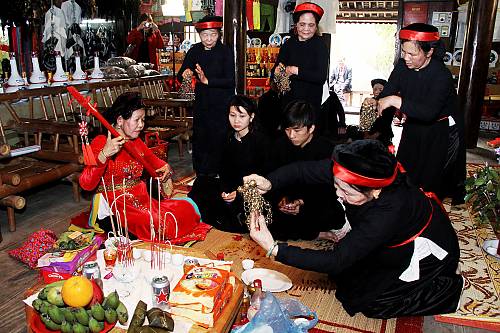Practices of Then by Tày, Nùng and Thái ethnic groups in Viet Nam – intangible heritage – Culture Sector – UNESCO
Viet Nam
Your browser is not supported by this application. Please use recent versions of browsers such as Google Chrome, Firefox, Edge or Safari to access ‘Dive’ interfaces.
Inscribed in 2019 (14.COM) on the Representative List of the Intangible Cultural Heritage of Humanity
Then, an essential ritual practice in the spiritual life of the Tày, Nùng and Thái ethnic groups in Viet Nam, reflects concepts about human beings, the natural world and the universe. Then ceremonies describe a journey in which the Then Master (male or female) controls ghost soldiers travelling from the earth realm to the heaven realm, to offer items of worship and present their prayers for peace, for treating illnesses, good crops, a happy new year, etc. The Then Master starts the journey by singing and plucking a tính lute. Depending on the worshipping purposes, Then masters arrange worship trips to pray to different native Gods. Then masters use various items – such as a demon-expelling sword, a yin and yang rod, a bell, etc. – to perform ceremonies in the believer’s house, outdoors or at the Then alter of the Master’s house. The Master wears ceremonial dress, sings in the language of their ethnic group, plays the tính lute, shakes rattle-bells and waves a fan. Some ceremonies are accompanied by a female dancing group. Then is always transmitted orally while its rituals are conducted, reflecting its succession between the generations, and Then Masters play a key role in passing on the related skills and know-how, with some conducting around 200 ceremonies a year.
















